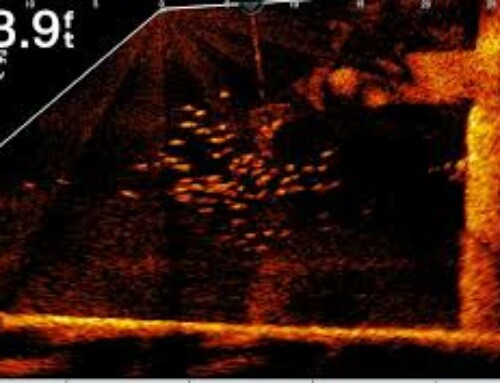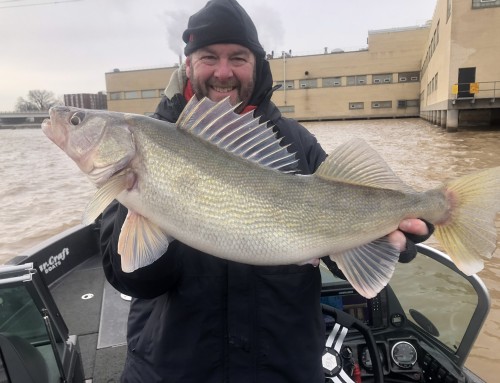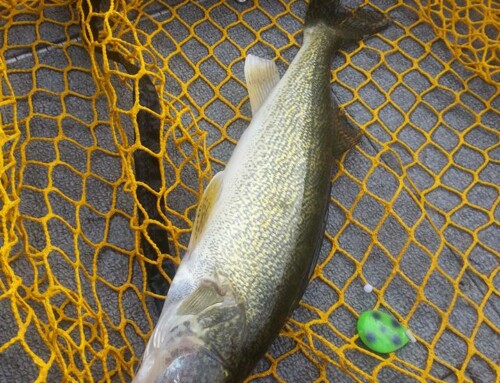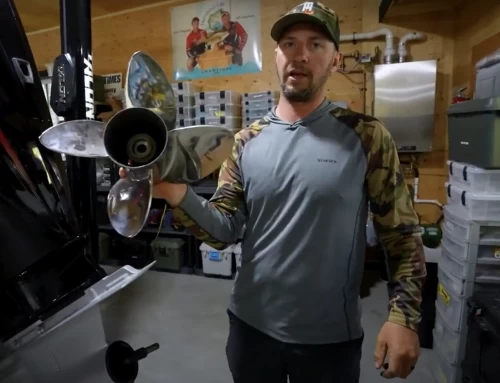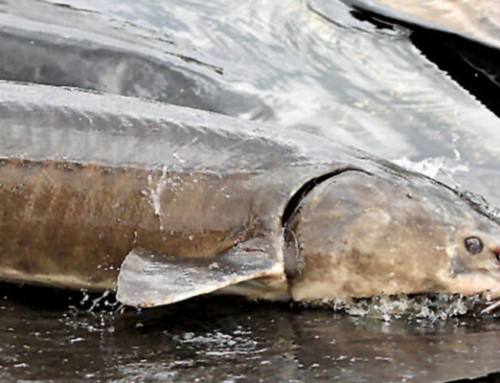WISCONSIN DEPARTMENT OF NATURAL RESOURCES2021 Winnebago System Chironomid (Lake Fly) Relative Abundance Assessment Report Lucas KoenigFisheries Management Technician, Oshkosh IntroductionChironomid larvae, commonly referred to as lake fly larvae or redworms, are very common throughout Lake Winnebago and the Upriver Lakes. In fact, Heling et al.(2018) reported that Chironomids represented approximately half of all macroinvertebrates sampled from the profundal zone (deep zone of a body of water located below the range of effective light penetration) of Lake Winnebago in 2013 and 2014. Chironomid larvae are an important part of the aquatic food web and are critical to the diet of Lake Sturgeon. Stelzer et al. (2006) estimated that Chironomid larvae contribute 49% of the carbon assimilated by Lake Sturgeon, while Gizzard Shad contributed 37% comparatively. These results indicate that although Gizzard Shad can dominate the diets of Lake St urgeon during the winter spear fishery, Chironomid larvae are a more important food source to Lake Sturgeon over the course of an entire year.Periodic assessments of the Chironomid populations inhabiting Lake Winnebago were conducted between 1961-2019 (Hilsenhoff 1961, 1962 ; Koehnke 1997; Heling et al. 2018). Each project had slightly different objectives, but relative abundance was always assessed, thus providing a long-range data set. A standard assessment of the abundance and distribution of Chironomid larvae within the Upriver Lakes (Butte des Morts, Winneconne and Poygan) was initiated in 2017 and sampling continued through 2020.
Our objectives for assessing the Chironomid populations on the Winnebago System are to: 1) assess relative abundance of Chironomid larvae within Lake Winnebago and the Upriver Lakes and 2) assess spatial distribution of Chironomid larvae within Lake Winnebago and the Upriver Lakes.MethodsSampling conducted on Lake Winnebago between 1961-2011 consisted of four drops of an Eckman dredge (photo inset) at each of the four sites throughout the profundal zone of Lake Winnebago ( Sites 1-4; Figure 1). The sampling design was modified in 2013 to include 29 additional sites. Sites 1-4 were maintained to allow for comparison to historical data (Figure 1). Annual sampling of 33 sites in the profundal zone of Lake Winnebago has occurred since 2013, with two drops of the dredge at each location. Sampling prior to 2013 occurred over the entirety of the open water period, but only August sampling results are included in this report to be consistent with sampling protocols from 2013-2020. Chironomid sampling on the Upriver Lakes commenced in 2017 and consisted of sampling 48 sites (13 on Lake Butte des Morts, 10 on Lake Winneconne and 25 on Lake Poygan; Figure 2) using the same methods used on Lake Winnebago.Substrate samples collected at all locations were sieved through a 541-μm sieve bucket (photo inset) and remaining material was preserved in 95% alcohol. Fourth instar Chironomid larvae (each instar represents a stage of development) were enumerated for each sampling location to track relative abundance (number of larvae per dredge drop) of Chironomid larvae within Lake Winnebago and the Upriver Lakes.The fourth instar is the final stage of development for Chironomid larvae and the stage that is most frequently observed in sturgeon stomachs sampled during the spear fishery.Photo Credit: Wisconsin DNRPhoto Credit: Wisconsin DNR
ResultsChironomid catch rates observed at sites 1-4 within Lake Winnebago have been extremely variable through time with an average of 26.9 larvae per dredge drop (range=1.6-61.1 larvae per dredge drop; SD=15.1) (Figure 3). In general, more larvae were collected in the 1960s than the 1990s, but no definitive trend exists over the entirety of the data set. The 2021 catch rate of 5.6 larvae per dredge drop ranks as one of the lower values over the entirety of the data set (Figure 3) and is a 69.4 % reduction over the catch rate observed during 2020 sampling.Like the long-term data set, there has been quite a bit of variability in catch rates observed since increasing the number of sampling locations in 2013 (Figure 4). The 2021 catch rate of 11.6 larvae per dredge drop was thesecond lowest catch rate observed during the nine years of sampling falling ahead of only 2017 (9.4larvae per dredge drop), but very similar to the catch rate observed in 2020 (11.7 larvae per dredge drop). Sampling locations centrally located within Lake Winnebago and north tend to have the highest average catch rates of Chironomid larvae, while the furthest south locations tend to exhibit the lowest average catch. However, the spatial distribution of Chironomid larvae observed during 2021 assessments did not appear to follow this trend. Site 1 and sites 28-35 represent the furthest south sampling locations on Lake Winnebago and had the highest catch rates ( mean = 26.8 larvae per dredge drop; SD = 23.3; Figure 5). In comparison, many of the sites with the lowest catch rates (2- 3, 6, 9- 11, 15-16, and 20-21) are all located in the northern half of Lake Winnebago (Figures 1 and 5). The mean Chironomid larvae catch rate observed on the Upriver Lakes in 2021 (7.0 larvae per dredge drop) w as slightly below to the 5- year average since annual sampling began in 2017 (Figure 6). The 2021 catch rate of 10.0 larvae per dredge drop observed on Lake Poygan was an increase over the catch rates from 2019 and 2020, however, catch rates on Lake Butte des Morts, Lake Winneconne and combined across the three lakes all decreased relative 2019 (Figure 6). Overall, the Upriver Lakes appear to have lower relative abundance of Chironomid larvae as mean catch rates on Lake Winnebago have been higher than the Upriver Lakes in all five years where paired sampling data are available. Discussion And Implications Of Sturgeon ManagementChironomid larvae catch from Lake Winnebago in 2021 was low relative to 2018-2019, but with a catch rate like that observed during 2020. In fact, the catch rate observed in 2021 was the second lowest since sampling expanded in 2013. Chironomid larvae and young of year Gizzard Shad are the two most important food sources for Lake Sturgeon within the Winnebago System. Bottom trawl assessment data from August and September indicate a very weak Gizzard
Shad hatch in 2021. The lack of Gizzard Shad and low relative density of Chironomid larvae may cause concern for some spearers. However, fish will still be able to find forage as there are Chironomid larvae present within the lake and fish could also seek out alternative food sources like isopods and Zebra Mussels. With a weak Gizzard Shad hatch in 2021, we will likely see generally leaner fish harvested during the 2022 spearing season. Gizzard Shad exhibit boom-bust recruitment on the Winnebago System and unfortunately there has not been a strong shad hatch since 2016. This recruitment pattern is environmentally driven and not caused by predation fromlake sturgeon or other species. Although it is often difficult to understand the environmental factors that drive year class strength for certain fish species, it appears that we generally see higher Gizzard Shad hatches during years when the system experiences warm, dry years and lower hatches during mild, wet years based on bottom trawling assessment data. A further clarifying point is thatthere has not been a downward trend in relative abundance of Chironomid larvae in recent years. In fact, the catch rates observed during 2018 and 2019 were relatively high, while catch rates observed during 2017, 2020 and now 2021 were relatively low. Currently, we are not worried about Chironomid populations and think that this variation is likely natural population patterns. However, continued monitoring of the Chironomid populations within Lake Winnebago will be important to see if any trends do develop and forecast how year to year variability will impact the sturgeon resource.Sampling conducted in 2021 marked the fifth year of Chironomid assessment on the Upriver Lakes. Catch rates observed in 2017 were extremely low. Catch rates in 2018-2021 were higher than those observed in 2017, which has provided merit to this assessment. Catch rates have been variable by lake from year to year, but some general trends are starting to develop. First, we observed that 14 sites had very low catch rates. These sites generally contained sandy substrate and, subsequently, were removed from the sampling rotation prior to 2020. A total of 34 sites remain within the sampling rotation and these sites comprise an evenmix of locations between lakes Butte des Morts, Winneconne and Poygan. It’s also apparent that Chironomid densities are lower across the board on the Upriver Lakes relative to Lake Winnebago. This isn’t a huge surprise given that the substrate is quite different between the profundal zone of Lake Winnebago and the Upriver Lakes. The substrate on Lake Winnebago is more of a soft, loose muck, whereas the substrate on the Upriver Lakes is coarser. We are also starting to see some trends within the Upriver Lakes. Catch rates on Lake Butte des Morts and Lake Poygan have been consistently higher than catch rates on Lake Winneconne over the past five years. We plan to continue sampling the Upriver Lakes in the future, which will hopefully shed some light onto what may be transpiring from year to year relative to Chironomid relative abundance and distribution within the Upriver Lakes.
Chironomid larvae remain a critical part of the food web within the Lake Winnebago System. Lake Sturgeon, and other fish species, rely on this resource for year-round foraging. Based on results presented in this report, spearers should anticipate seeing a decrease in the wet mass of Chironomid larvaeobserved in sturgeon stomachs during the 2022 spearing season. Time will tell if that prediction comes true and just how substantial the decrease may be. Continued monitoring of sturgeon foraging trends and relative abundance and distribution of Chironomid larvae in Lake Winnebago and the Upriver Lakes will be extremely valuable to future management of the sturgeon population and fishery within the Winnebago System.
ReferencesHeling, C. L., R. S. Stelzer, G. H. Drecktrah, and R. P. Koenigs. 2018. Spatial distribution of benthic invertebrates at the whole-ecosystem scale in a large eutrophic lake. Freshwater Science 37(3):605-617


